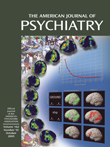Abstract
OBJECTIVE: Time-limited manualized dynamic psychotherapy was compared with community-delivered psychodynamic therapy for outpatients with personality disorders. METHOD: In a stratified randomized clinical trial, 156 patients with any personality disorder diagnosis were randomly assigned either to 40 sessions of supportive-expressive psychotherapy (N=80) or to community-delivered psychodynamic therapy (N=76). Assessments were made at intake and 1 and 2 years after intake. Patients were recruited consecutively from two community mental health centers (CMHCs), assessed with the Structural Clinical Interview for DSM-IV Axis II Personality Disorders, and included if they had a diagnosis of any DSM-IV personality disorder. The outcome measures included the presence of a personality disorder diagnosis, personality disorder severity index, level of psychiatric symptoms (SCL-90), Global Assessment of Functioning Scale score, and number of therapy sessions. General mixed-model analysis of variance was used to assess group and time effects. RESULTS: In both treatment conditions, the global level of functioning improved while there were decreases in the prevalence of patients fulfilling criteria for a personality disorder diagnosis, personality disorder severity, and psychiatric symptoms. There was no difference in effect between treatments. During the follow-up period, patients who received supportive-expressive psychotherapy made significantly fewer visits to the CMHCs than the patients who received community-delivered psychodynamic therapy. CONCLUSIONS: Manualized supportive-expressive psychotherapy was as effective as nonmanualized community-delivered psychodynamic therapy conducted by experienced dynamic clinicians.



